The Ministry of Defence is inviting proposals from industry for the rapid delivery of vehicle-mounted laser weapons capable of shooting down drones at distances beyond one kilometre, as part of a new land-based counter-UAS initiative.
In a Preliminary Market Engagement Notice published on 13 June 2025, the MOD states it is seeking to understand “the current maturity in the application of Laser Directed Energy Weapon (LDEW) technology” against the growing threat posed by small uncrewed air systems. The programme is being led by Defence Equipment and Support.
The notice outlines specific expectations for interested suppliers. The MOD is seeking a “LDEW system (effector, power, cooling, sensor) to destroy small UAS at ranges of 1km+”, adding that “availability to deliver within 12 months ideally” will be required. The system must also be “hosted on a land vehicle platform” and include “UK system content to be declared – 50% by value and above expected.”
A total of up to £20 million is available for the acquisition of multiple systems. The government also explicitly welcomes “collaboration between industry partners to form a solution.”
Suppliers will be expected to demonstrate the capability of their systems in live conditions. The MOD confirms that “testing range/facilities to be provided by government, as a demonstration of systems would be required as part of any procurement.”
The language used in the request is deliberately broad, with the MOD noting: “The description is deliberately high level and outcome based, so as not to unduly limit the use cases or technologies to which responses might refer.” The goal is to “understand the current maturity, performance, cost, and availability of LDEW systems to be operated in counter UAS roles.”
The market engagement process will run until 11 July 2025. The MOD plans to hold one-to-one sessions with suppliers who hold appropriate security clearance between 16 June and 11 July. A wider industry engagement day may also be arranged depending on the level of response.
Contracts, if awarded, would run from 1 August 2025 to 31 March 2026.
This new drive follows a successful British Army test in October 2024, when a High Energy Laser demonstrator was fired from an armoured Wolfhound vehicle for the first time. The system, developed by Team Hersa, a partnership between Defence Equipment & Support, the Defence Science and Technology Laboratory (Dstl), and a Raytheon UK-led industry team, successfully destroyed hovering drones at Radnor Range in mid-Wales. Soldiers from 16 Regiment Royal Artillery conducted the live-fire user experimentation.


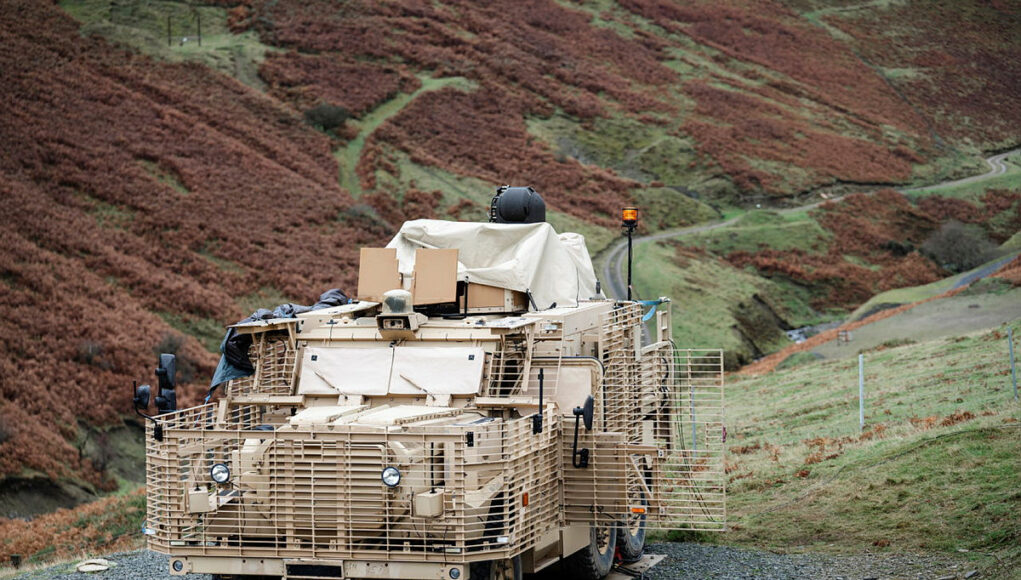
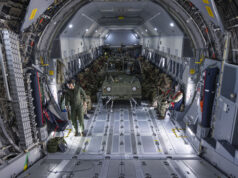



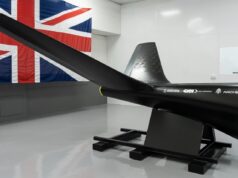


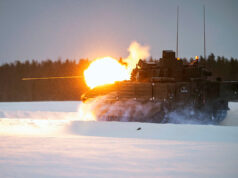

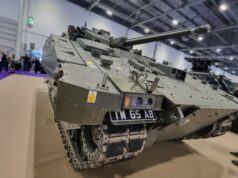

Good start but as with every thing lots of talk, wants and needs but no orders. Any of the wise men/women on here know when we might see any orders from the SDR? a lot asked for hinted at but nothing yet
Needs more money and your fave government hasn’t supplied any.
not my fave any thing, bunch leftie c**ts but better at defence than the last lot who hollowed it out and hid the fact
Autumn, in the defence white paper.
Thank you,
Part of the problem is the tech isn’t really there. As far as I am aware no nation has yet deployed such a system on any in service vehicles. Plenty of trials from the US etc but lack of orders kinda indicate nothing yet meets the requirement.
So really is a distraction ie a wish list item which will not be in service for a few years, seems pattern of that with the MOD, not much gets ordered that is here and ready to enter service asp.
Possible, also possible if unlikely is they realise they need something and something not quiet there but semi effective could save a lot of lives vs having nothing. But yeah more likely political move so they can say they are doing something for this clear threat, without actually doing anything.
There is lot doing some thing or making it look like they are doing something when really doing nothing just talking about it. Seem very much the thing of the last year, as you say something is better than nothing which what we have just now. I fear real orders will be few and far between surounded by normal MOD waffle and deflection as to why few orders.
Lockheed Martin has a 2 kw laser for drones out to about 1 km, Robin Radar systems have a 29 kg pod for 360 degree 3 D drone detection out to 3.4km for small drones up to 60 mph.
Steve, MoD demonstrated a Raytheon UK laser on a Wolfhound about a year ago. The British supply chain also included: Frazer-Nash, NP Aerospace, LumOptica, Blighter Surveillance Systems, and Cambridge Pixel.
Taiwan (with international partners, which is understood to include the US) has also demonstrated a vehicle-mounted 50 kW laser, which can be mounted on a CM-32 Clouded Leopard armoured vehcice.
Martin, The SDR is of course a very high-level document. It amounts to a report lead by 3 external SMEs to the MoD. The MoD must now respomd to the 60+ recommendations, doing planning and staff-work which is then written up into a Defence Command Paper or White Paper. That is the detailed work from which orders from new ideas will be generated.
Thank you, for explaining things. I get that the SDR says this what we need and should have, but its un likely we will see orders for every thing asked for in a Defence Command Paper. Simply because there is not enough money on hand and of course not all 60 recommendations will be acted on. I do expect many orders for kit end of the year within reason.
We both know the MOD can not have every thing its been told it should have or need. Will be interesting to see what is dropped/delayed or gapped and why.
If I was in command of a vehicle with a directed energy weapon I would be tempted to shout “Phasers, fire!” every few seconds. And yes, I realise a phaser is a particle beam not a laser. Speaking of which, when are we gonna get particle weapons?
I believe that it will be around the time we get the mechanised mobile infantry suits (as per the Starship Troopers book).
We won’t need either Boxers or Ajax (or Challengers 3 even) from that point onwards!
My mate was weapons Officer in the Imperial Navy on the Death Star back in the day I will ask him.
I wouldn’t care for his opinion, they severely underestimated the threat small aerial targets pose to high prestige, high cost assets after all…
Power requirement for particle beam weapon is mega to giga watts, think it would need its own power station and a long lead lol.
We already have “communicators” with smart phones acting also as pocket computers. Pity we can’t stop sewage getting into water cpurses though!
Maybe what we need are some kind of super-drones that move faster & can cheaply take incoming drones out with buckshot shotgun shells.
Rapid Population growth has exceeded capacity of sewage works during wet weather as population has grown faster than expansion of sites. In future the sludge will have to be burnt due to forever chemicals, drugs and microplastics not being good to spread on farmland. Don’t seem to be any planned or funding available.
I thought they already had that. Wasn’t the Raytheon, Wolfhound-mounted laser successfully tested last year? So what’s with the whole invitation for proposals? We just spent £17m developing the capability. Buy it, field it, report on it and iterate it!
This feels like just another reason not to make something operational, ensuring there’s further delay and no proper feedback from the troops who might use it.
just dragging out out via smoke and mirrors with out buying any thing, makes look like they doing some thing when its all just a talking shop and wish list.
Wasn’t Raytheon a partiularly large system – for mounting on t45 and semi-static land based, requiring very large power units and cooling, so far too heavy for agile vehicles. This one sounds like it might be for compact ones you can mount on a 4×4, but still achieving 1km+ range. That was my impression reading anyway
It does sound impressive, a more compact system with a range of 1km+. The engineering behind this kind of equipment is developing very quickly even if it still appears quite a way off from full maturity. So, for the foreseeable future, smallish batches and incremental iteration will be the order of the day.
We have to be careful not to be too impatient with procuring these nascent technologies: if we buy too much and too quickly, we run the risk of wasting a ton of money on stuff that will be already out of date a month or so after it’s been delivered.
Investing to scale up manufacturing established low tech stuff like shells and gun barrels makes perfect sense. Same goes for established high-tech munitions like Sea Ceptor and Sea Viper.
Brand new, still being developed, technologies, not so much. Pretty obvious that you should take a different approach in this case when you think about it for longer than a nano-second.
Does seem that being true that we should be eyeing up interim (or longer term as part of mixed systems) so a gun system like the Australian Slinger or the German Skyranger should be acquired assuming we have nothing to offer in an acceptable period which seems unlikely.
Nate, the Raytheon laser was mounted on a Wolfhound.
Ah thanks for pointing that out, I assumed the system for T45 was different but it’s just a higher wattage. Begs the question then why they’re calling for new systems seeing as 15KW DF is test proven for Wolfhound, why not just roll out the existing model?
Well they won’t need many the way they intend to keep shrinking the army.
I’m not hopeful.
Dragon fire is costing the RN £250 million for 2 units to arm a single warship.
The RN/ RFA hoped for so much more…seems Gucci kit and low numbers continuing
I fear the MOD is pursuing a wish dream here. It would of course be great if we could field a powerful laser weapon with a useful range on an Ajax, Boxer or lighter 4 x 4. Trouble is, nobody seems to have cracked it technically as yet.
Reinmetall I think is offering a laser option on its Skyranger, but so far are offering a 20 kW power supply, with an ambition to scale that up to 50 then one day maybe 100 kW. That sounds like it would be far too heavy for any of our tactical vehicles. Hence Thales test on a Wolfhound.
Would a 1 mile range be that useful anyway? Not every air threat is going to be a little kamikaze drone tootling along at 60 mph. A practical C-UAS system is also going to need to take out faster drones, helicopters, attack aircraft and so on
To do so, it is surely going to need to engage them at a much longer range than a mile?
While we pursue the wish-dream, others are busy acquiring LLAD/C-UAV combinations like SkyRanger, which has a 30mm cannon able to deal with FPV drones and an expensive missile like Martlet to deal with fast attacking aerial threats out to maybe 5 miles.
Would much prefer to see us order some similar kit now to succeed Stormer. An expensive missile on a light vehicle like VAMTAC – I.e. this Rapid Ranger thingy – does not sound like a very useful system for either off-road mobility or cost per shot against FPV drones.
As the current range limitations and weight obstacles of a laser air defence weapon will be obvious to the MOD, meaning any production is likely years away, if at all, suggests they are just using this to give the impression of activity.
Could they use any of the spare CT40 cannons (150?) for truck/land/Boxer based shorad?
CT 40 sytems are not great at AAW. Slower rate of fire & expensive ammo for what it delivers. There are better alternatives.
50kw is a a lot of power even assuming it’s 100% efficient, which it won’t be, where is the power coming from? All very fine in a demonstration field for a single shot or two, but middle of a combat zone dealing with dozens of shots is another topic.
I think ‘rapid’, ‘at pace’ most be the uk’s government’s new buzz word. Trouble is the UK government can’t do much by any speed except slow, glacial….